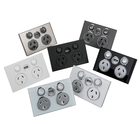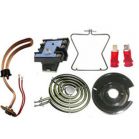Single-Pole Non-Contact Volt Detector, 12–1000 V AC
Product description
Before starting electrical installation work, electricians need to guarantee that their work environment is free of any live voltage. A voltage tester is required to test alternating electric fields or probable sources of error. The contactless Wiha voltage tester will give an initial indication of whether an area is live or not thanks to an optical and audible signal. Once the tester is switched on, the permanently green LED indicates that the tester is ready for use. During the voltage test, the LEDs will light up blue (weak), orange, or red (strong), depending on the strength of the alternating electric field. Two AAA batteries are required to operate the device. These are included in the delivery. The device switches off automatically to save energy if it is not used for four minutes. An integrated flashlight allows the user to illuminate the measurement point in dark environments and can be switched off and on manually for use solely as a flashlight. With its push-on clip, the voltage tester snugly fits into any shirt or trouser pocket thanks to its handy size. The voltage tester is suitable for all socket variants worldwide thanks to its measurement tip suited to international usage. Designed for CAT IV 1,000 VAC, the single-pole voltage tester complies with EN 61010-1/IEC 61326.6.
Features
- Voltage: 12-1000V AC
- Volt Detection: Audible (can be muted)
- Visual: (LED Coloured Scale)
- Self Check: Ready (Green LED)
- Protection Rating: IP67
- Tester has an Auto Off after 4mins
- Built in LED Torch - Separate On/Off Switch
- Torch has an Auto Off after 15mins
Application
Used to detect and locate live electrical cabling and wires, breaks and cable interruptions, blown fuses, defective light bulbs on light chains and single wires
Note
The voltage tester should be tested on a known voltage source before and after every use to ensure it functions correctly.











